We have frequently lamented the CPI index as its underlying prices tend to lag real-time data significantly and cause it to misrepresent what is happening. For instance, shelter costs, representing about 40% of CPI, lag real rent and imputed rent prices by over six months. Further, energy costs lag by three months. Additionally, the BLS uses imputed costs, hedonics, and mathematical smoothing methodologies that can also skew data. Trueflation was created to be a better CPI. Accordingly, Trueflation removes hedonics, imputed costs, and smoothing methods. It also uses real-time market prices from multiple sources. Perhaps most importantly, it regroups categories and reassigns weights to make its index more representative of actual consumption and price trends. Click HERE for more on their methodology.
The graphic below shows the daily Trueflation rate is down to 1.85%. Conversely, CPI is almost double that rate at 3.3%. What if the Fed has already won its war on inflation, but the CPI data will not confirm that for six months or even longer? Per Danielle DiMartino Booth, CPI and Trueflation are 97% correlated. While they tend to track each other well, Trueflation is most likely a robust real-time indicator of where CPI will be in the coming months.
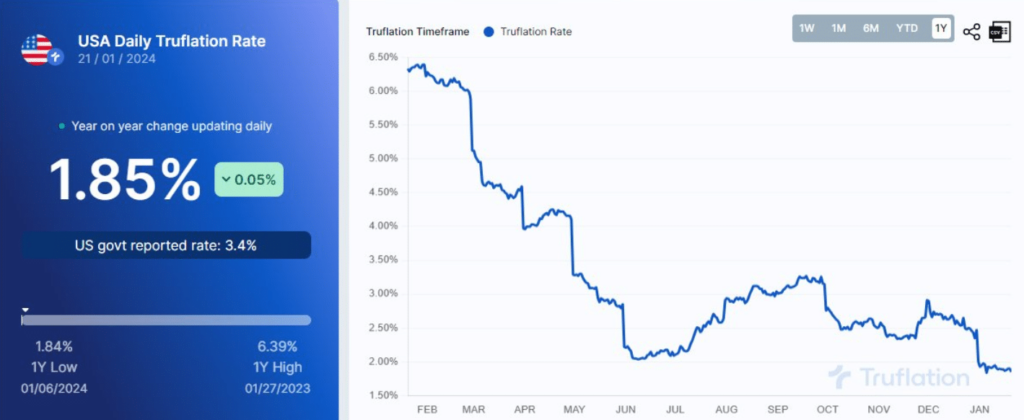
What To Watch Today
Earnings
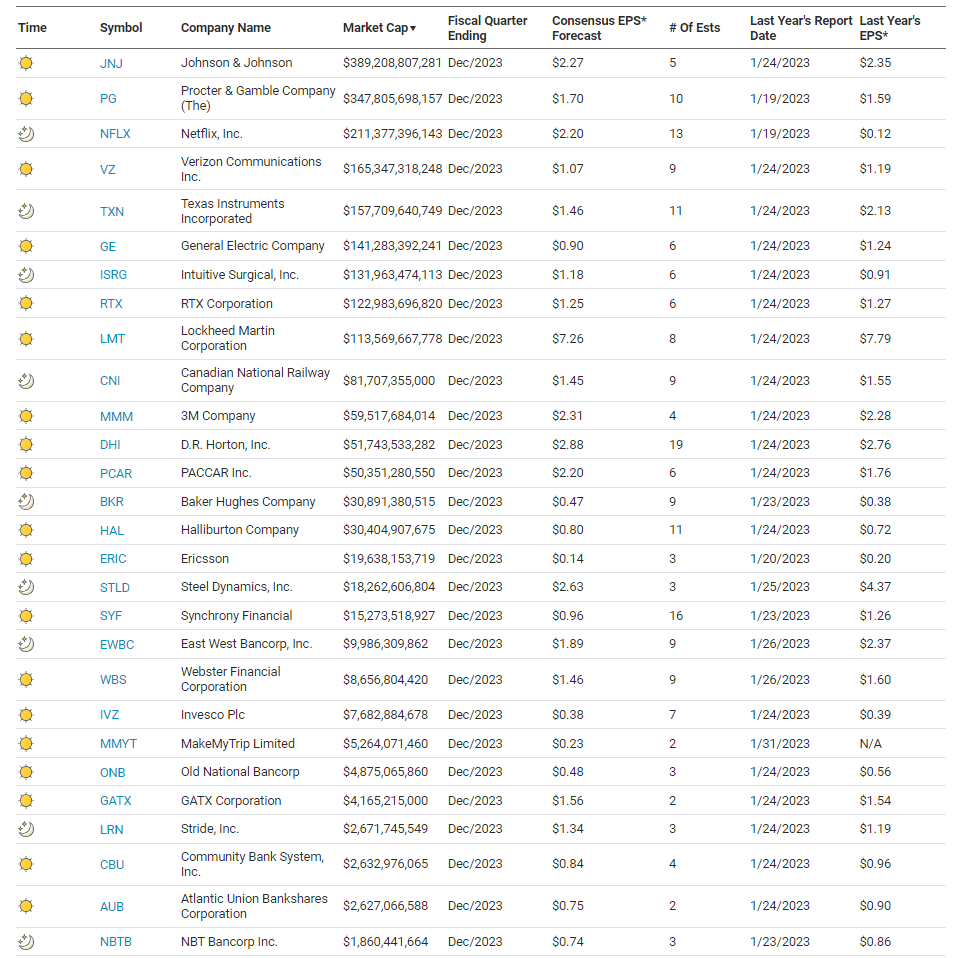
Economy

Investing Summit: Early Bird Registration Available Now
January 27th, we are hosting a live event featuring Greg Valliere to discuss investing in the 2024 presidential election. What will a new president mean for the markets, the risks, and where to invest through it all? Greg will be joined by Lance Roberts, Michael Lebowitz, and Adam Taggart for morning presentations covering everything you need to know for the New Year.
Register now, as there are only 150 seats. The session is a LIVE EVENT, and no recordings will be provided.

Market Trading Update
As discussed yesterday, the market hit a record close last Friday, leading the media to declare a new high each day the market rises. Such is normal during a bull market advance. As we noted in that update, the market continues to be fairly narrow in breadth, although yesterday, the Russell 2000 (small and mid-cap stocks) showed some signs of life. However, as shown, the performance gap over the last year is staggering.
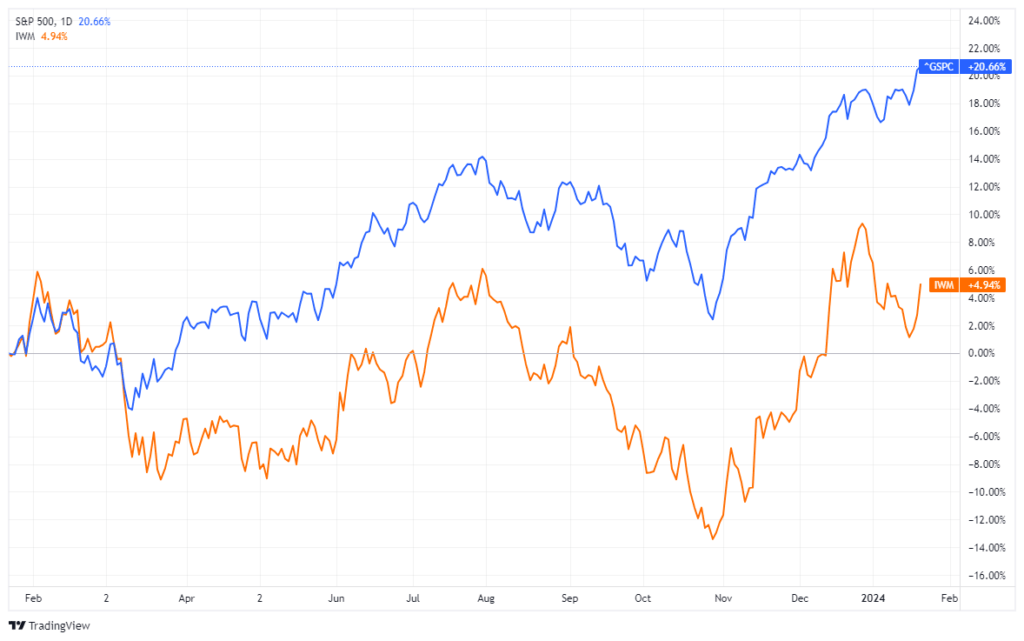
While the recent breakout to new highs is indeed bullish, and the MACD “sell signal” is reversing, we are mindful of a similar period last year where signals reversed from fairly high levels. In June and July, the market advanced (narrowly with Technology leading), reversing the MACD signal. That new buy signal lifted stocks into July before a more significant correction took hold. With the negative divergence in the Relative Strength Index, while we are short-term bullish, we remain cautious of inherent risk.
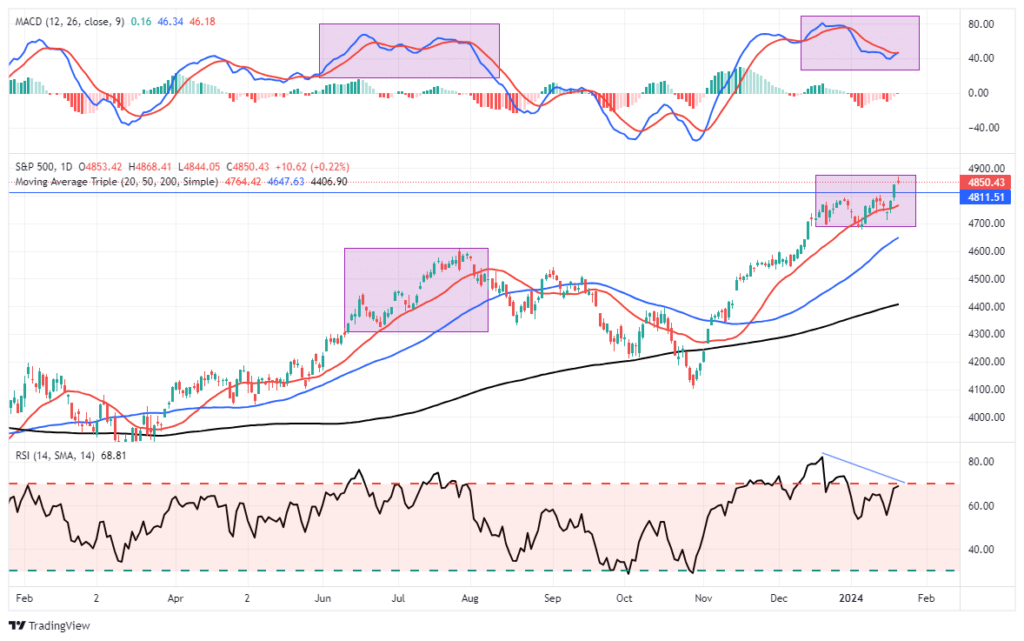
What could trip up the current bullish charge? We don’t know with certainty, but a change in tone from the Federal Reserve that undermines current expectations of rate cuts this year would certainly do the trick. Remain long for now, but keep an eye on the risk.

The Big Short Again
The graph below charts the price of Ten-year Treasury note futures and, below it, the net futures positions of Speculators. Speculators, including hedge funds and CTAs, are now short 889,385 contracts on the 10-year Treasury futures. Such is the largest 10-year Treasury short position in history and even greater than when yields were just below 5%. In other words, the amount of short covering that will occur is even more significant today than when bonds started to rally in November.
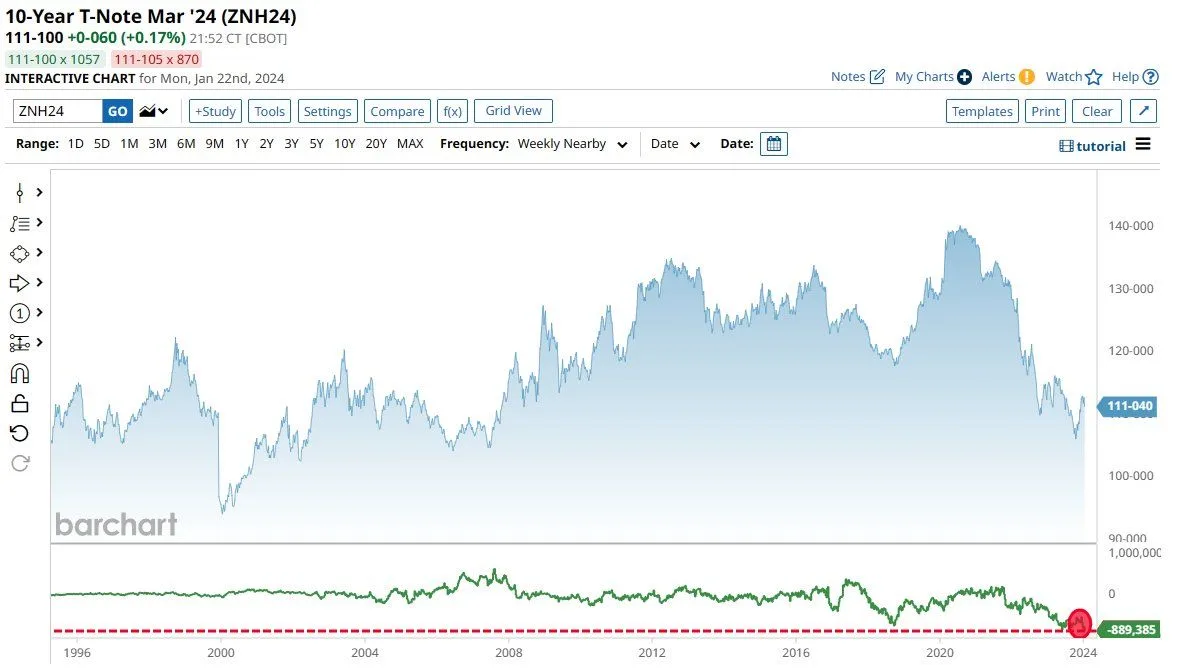
Record Highs For The S&P 500, What Comes Next?
The S&P 500 just snapped a 512 trading day streak without hitting a new all-time high. Such is the 6th longest streak in history. Oftentimes, reaching new highs is bullish. However, market downtrends typically start at record highs. The table below shows the five most extended periods in which the S&P 500 went without hitting a record high. Other than 2007, and we remember what followed in 2008, the market rose over the next six months.
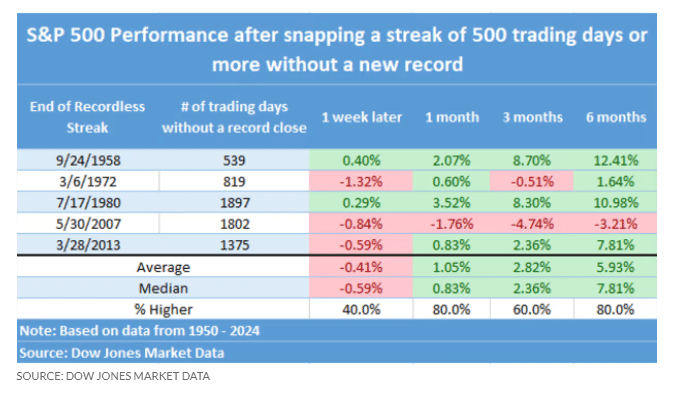
Economics and Politics
The graph below shows that the sharp divergence in views and opinions between Democrats and Republicans goes well beyond traditional topics like abortion, guns, and immigration. It appears perceptions of inflation between Democrats and Republicans also vary greatly. Consequently, Republicans and Independents both think inflation will be running at around 4% a year from now. Conversely, Democrats believe it will be below 2.5%.
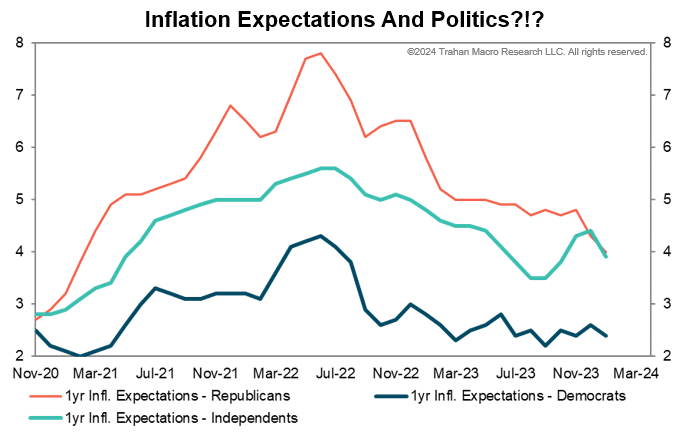
Tweet of the Day
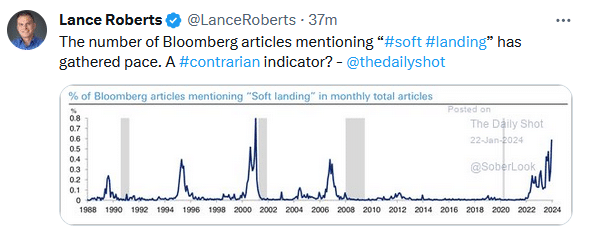
“Want to have better long-term success in managing your portfolio? Here are our 15-trading rules for managing market risks.”
Please subscribe to the daily commentary to receive these updates every morning before the opening bell.
If you found this blog useful, please send it to someone else, share it on social media, or contact us to set up a meeting.


